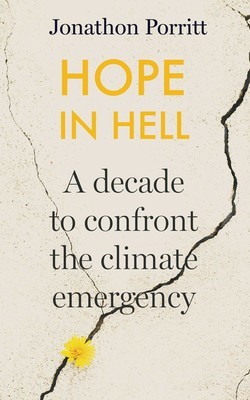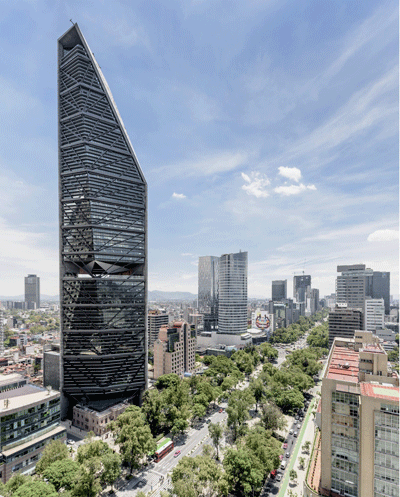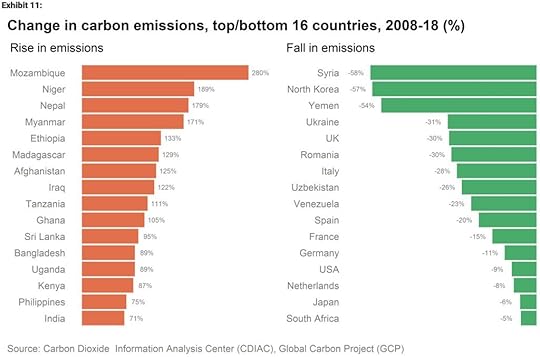Jeremy Williams's Blog, page 105
October 23, 2020
Building of the week: Hope Rise
The ZedPod is an idea that I’ve had my eye on for a couple of years now. It’s an ingenious solution to Britain’s crisis in affordable housing – building modular homes on top of car parks, in slim pre-fabricated units that can be delivered to the site and installed above the parking space.
We very nearly got to see the first commercial application of the idea in nearby Dunstable, until local spoilsports lodged their objections. Instead, here’s a project from Bristol. Hope Rise is a 100% affordable...
October 22, 2020
Being moderate in a time of urgency
This time last year I was hard at work editing the book Time to Act, about Christians taking direct action for the climate. Among my own contributions was a chapter summarising Martin Luther King’s thoughts on civil disobedience, drawn in large part from his famous Letter from a Birmingham Jail.
There are so many powerful ideas in that letter, but I was reminded of this one that’s cited in a book I’m reading at the moment (Diversifying Power by Jennie Stephens), where King describes his disa...
October 21, 2020
Ynsect – the world’s biggest insect farmer
Insect farming has been a small scale affair until very recently. It’s either been an artisan pursuit in countries where insects are regularly eaten, or an experimental niche industry. That is now changing, and to see where the future of insect farming lies, it’s worth looking at the French firm Ynsect.
Ynsect runs a robotic, AI-powered insect farm that produces food for animals and fish. It uses agricultural waste as a feedstock and raises mealworms in what is currently the world’s largest ...
October 20, 2020
Offshore wind and energy democracy
Last week I wrote about the benefits of floating wind farms, and the British government’s plans to power every home in the country with offshore wind. Because I wanted the article to be specifically about the benefits, I didn’t investigate one of my hesitations about the idea. But I do have one in particular, and it has to do with energy democracy.
Energy democracy is one of the great co-benefits of renewable energy. It is expressed best in community energy, but also in self-reliance or bein...
October 19, 2020
Book review: Hope in Hell, by Jonathon Porritt
 Jonathon Porritt is one of Britain’s most experienced environmentalists, involved in the Green Party and serving as director of Friends of the Earth. He founded Forum for the Future and led the Sustainable Development Commission. He has pursued the green agenda through politics, protest, business and government. And in this new book, he considers our current moment and what it requires of us.
Jonathon Porritt is one of Britain’s most experienced environmentalists, involved in the Green Party and serving as director of Friends of the Earth. He founded Forum for the Future and led the Sustainable Development Commission. He has pursued the green agenda through politics, protest, business and government. And in this new book, he considers our current moment and what it requires of us.
The book provides a kind of ‘state of the movement’ overview. There’s a section that summarises the lat...
October 17, 2020
What we learned this week
Here’s a neat sign of the decline of fossil fuels. Porsche know that their cars tend to have a long life on the roads, so they’re investing in alternative fuels as a way of providing for Porsche owners who will be running their petrol sports cars long into the transition to electric.
And another – the Navajo Generating Station was one of America’s biggest coal power stations. It closed last year, and its massive grid connection infrastructure could be recycled into a pumped hydro energy stora...
October 16, 2020
Building of the week: Torre Reforma
 On May 23rd, 2007, the world passed a very specific milestone. That was the day, according to a demographic study, that the global population went from majority rural to majority urban. The scales tilted towards cities, which were growing in both number and size.
On May 23rd, 2007, the world passed a very specific milestone. That was the day, according to a demographic study, that the global population went from majority rural to majority urban. The scales tilted towards cities, which were growing in both number and size.
At 21 million citizens, Mexico City is one of the largest, and it’s little surprise that it has been growing upwards. Torre Reforma is one of several striking new skyscrapers in the region that are breaking new ground in design and sus...
October 15, 2020
Where emissions have risen and fallen fastest
Here’s a graph that caught my eye recently, posted on Twitter by David Roberts of Vox. It’s from a Morgan Stanley report that I don’t have access to, so apologies for not providing a linked source. It shows the 16 countries where carbon emissions have fallen fastest between 2008 and 2018, and the 16 countries where they have risen fastest.

There are a couple of really noticeable things here. One is that for the most part, the places where emissions are rising fastest are poorer countries...
October 14, 2020
The benefits of floating wind power
Last week I wrote about Prime Minister Boris Johnson’s speech advocating wind power, a long awaited awakening to its potential. Johnson specifically mentioned floating wind turbines, and on that front he isn’t so far behind the curve. The world’s first commercial floating wind turbines were installed off the coast of Scotland in 2017.
The big advantage of floating wind turbines is that it expands the number of places you can build. You are no longer restricted to shallow waters. By being abl...
October 13, 2020
Secondhand Levi’s for sustainability
Clothing is, in the words of sustainability commentator Chris Goodall, “the linear economy at its worst.” The fashion industry runs cheap and fast, outsourcing the environmental and social costs onto lower income countries, and relying on novelty purchases in rich countries to make its profits. Most clothing is discarded before it is worn out, and 85% of it goes to landfill or incineration.
Although it very rarely gets mentioned in discussions around climate change, clothing is a major obsta...



